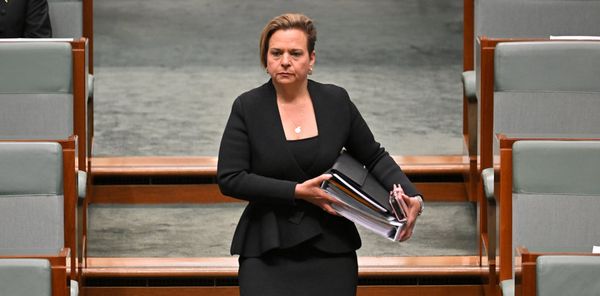
When he was just eight years old, Roberto Rodriguez remembers his aunt taking him out of the park where he often played with friends to audition for the ballet school in Havana, Cuba’s capital. He didn’t want to go. Ballet was for girls, not boys. It’s a cliche that has persisted for decades – an enforced idea of what it means to be one thing or another, what choices should be made based on societal concepts of gender.
But his aunt insisted. “At first, I didn’t want to be a ballet dancer, but then it became what I wanted in my life,” he says. Now in his mid-30s, Rodriguez is a soloist at the National Dance Company of Mexico. “When I was a kid I was always sporty, doing gymnastics, taekwondo – sports that were ‘for men’. When I started ballet, in my neighbourhood, there was this idea that I would be a ‘ballerina’, that I would be gay. But that didn’t bother me, I always defended who I was.” After years, these damaging and homophobic attitudes started to change, even for his father, he says. “At first, he didn’t want me to be a ballet dancer; I had to tell him that’s what I wanted for my life. And now he respects that.”
Rodriguez says ballet has given him everything. It’s how he met his partner, another dancer, with whom he now has a son. But through dance he’s also learned about his own identity and place in this world. “I’ve learned how to be a man and how to be an artist,” he says. “Masculinity for me is to know who I am. It is to have the right ideals, to know what I want, and, overall, to respect any sexuality that exists. It’s simply this: to respect others and to be myself.”



Roberto Rodriguez with his son (top and centre) and wife Ana Elisa (above), whom he met through dance. He says the world of ballet is like a ‘micro society’ that safely allows people to explore their own versions of masculinity and identity
The complexities around masculinity and art have always fascinated cinematographer and photographer Santiago Barreiro. Barreiro, who is from Uruguay, grew up in a region where perceptions of male identity have historically been suffocated by machismo. He explores these concepts in his series La Forma Masculina, which Barreiro translates as Men’s Way.
These attitudes form the basis of damaging stereotypes affecting all lives and identities, creating a culture of sexism, and at its worst, violence against women. Latin America is a region with some of the highest rates of gender-based violence in the world.


Juan Pablo Rodriguez (above and top)
Barreiro had been working with ballet dancers for years through his commercial photography work. It was during this time that he found ballet dancers were challenging traditions and questioning patriarchal structures, and saw how this was reflected through the human form. He felt it was important to look more closely at machismo’s impact on men and boys. “We arrive at the limits of society. Look at the figures to do with mental health – that men die because masculinity doesn’t allow them to be sensitive, to look after ourselves,” Barreiro says. “There has been a preconception about masculinity across all of Latin America. I started to investigate why societies believe that dance is an art for women, or is feminised, and why there is such a misconception that ballet changes your sexual orientation, for example.”
It’s something he’s experienced himself as an artist. “There is an attitude that people who work in art are very sensitive. And society has made something negative about this kind of masculinity – because our obligation, according to society, according to the hegemony, is to provide, to procreate and protect,” he says. “But in art, men have the freedom to exhibit their feelings, to be more sensitive, to reveal their problems.”
Barreiro adds: “I think we need more storytellers and investigators who work on these ‘smaller’ issues, because these smaller things always say something important about real life.”
Though Cuba seems to be an exception, as ballet and the arts were directly supported and funded by governments after the revolution, across the rest of the region ballet remains a profession and art form that still has far fewer men than women. “This has directly to do with society’s conception of masculinity, gender and dance,” Barreiro says.



Aaron de Jesus Marquez from Veracruz, Mexico. He has been practising ballet since the age of seven after he was discovered by dance project ProVer, which supports children from underprivileged backgrounds. He is pictured at age 15 with his grandmother
He was moved by the stories of dancers who had gone against familial and societal expectations in order to pursue ballet. In his photography, he focuses on male ballet dancers from across Latin America who deconstruct a hegemonic idea of masculinity. “Ballet asks the body to break traditions. These dancers had to adapt, explore their bodies in a way that hadn’t been explored before, because society didn’t permit it,” he says.
There is Aaron de Jesus Marquez, from Veracruz, Mexico, who was 15 when Barreiro photographed him just before the pandemic. The portraits present a boy who is overcoming prejudices he has faced in his choice to pursue ballet. “The photography shows he really loves to do this, and it doesn’t matter that society sees he’s in a woman’s environment. He proposes a new form of being a man,” Barreiro says.



Josué Gómez, then aged 16, is from Cali, Colombia. He fell in love with ballet when he was five, and has been supported by his parents to pursue dancing. ‘We believe in what Josué believes,’ his father says
Josué Gómez, was 16 when his portrait was taken; he is from a working-class family in Cali, Colombia and first started dancing at the age of five when his mother took him along to the folk classes she attended. Gómez is an example of someone who has had to persevere to get approval from his father. “Josué worked hard so his father could accept and respect what he was doing. Colombia is a country like many in Latin America, very machista, and he had to confront that very early. But his father learned very quickly that his kid was happy doing this, so the portrait here shows very much the family support.”


Santiago Fernandez from Cali, Colombia, photographed aged six. He dreams of being a professional dancer and gave up playing football with friends to study at the Instituto Colombiano de Ballet in his hometown
The portraits of Juan Pablo Rodriguez, aged 29, based in Lima, Peru, present the dancer’s belief in freedom of expression as a form of resistance. As a gay man, this is a vital part of his own masculinity, Barreiro says. While Colombian Santiago Fernandez, who was six when he was photographed, stood up to his father who didn’t want him to dance.
The dancers in the series all have their own stories and expressions of identity. “In the dance world, there isn’t one masculinity,” Barreiro says. “This is a project that talks about dance, but also talks about a society in conflict. Bit by bit we have to change. It is changing, but it needs more.”







